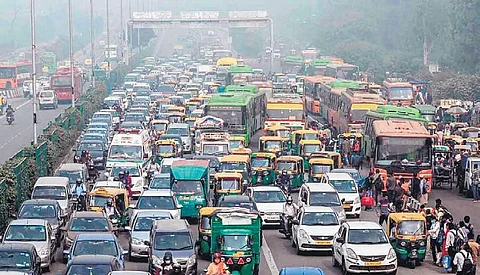

BENGALURU: Researchers from the Centre for Science and Environment (CSE) reported that all mega cities in India, irrespective of their locations in different geo-climatic zones, faced the challenge of worsening PM2.5 levels during the winter of 2022-23.
In the report, the team analysed five mega cities -- Delhi-NCR, Kolkata-Howrah, Mumbai, Hyderabad, Bengaluru and Chennai. It noted that Bengaluru and Hyderabad experienced the worst peak pollution this winter, compared with the past four years. The report stated that analysis was based on real-time particulate matter -- PM2.5 data -- collated in the cities from October 1, 2022, to February 28, 2023.
As per the report on January 27, 2023, the daily PM2.5 level in Bengaluru hit 152 micrograms per metre cube (µg/m³) -- the highest 24-hour PM2.5 average recorded in the city since 2019.

According to the report, the average winter PM2.5 level in Delhi was 151µg/m³, in Kolkata- Howrah it was 84µg/m³, in Mumbai, it was 77 µg/m³, in Hyderabad, it was 59µg/m³ (just under the standard), in Bengaluru, it was 44 µg/m³ and Chennai it was 42 µg/m³ (both were under the 24-hour standard, but breached the annual standard for PM2.5.)
The report also stated: “Days with bad air quality occurred in clusters during the winter season in mega cities. The clustering of bad air days was longer in Delhi, Kolkata, Mumbai and Hyderabad, but of shorter duration in Bengaluru and Chennai.”
“While Delhi’s winter air quality hogs all the eyeballs, the rising winter air pollution in other mega cities, including Kolkata, Mumbai, Hyderabad, Bengaluru and Chennai, does not get adequate attention. While Delhi has bent its seasonal pollution curve, winter air pollution is high or on the rise in most other mega cities. These cities, located outside the northern plains, may have more favourable meteorological conditions to contain the peaking of pollution during winters, but their overall city average and levels across locations can cause very high exposure. This demands round-the-year action to control emissions in cities that are motorising and urbanising rapidly,” said Anumita Roychowdhury, executive director-research and advocacy, CSE.